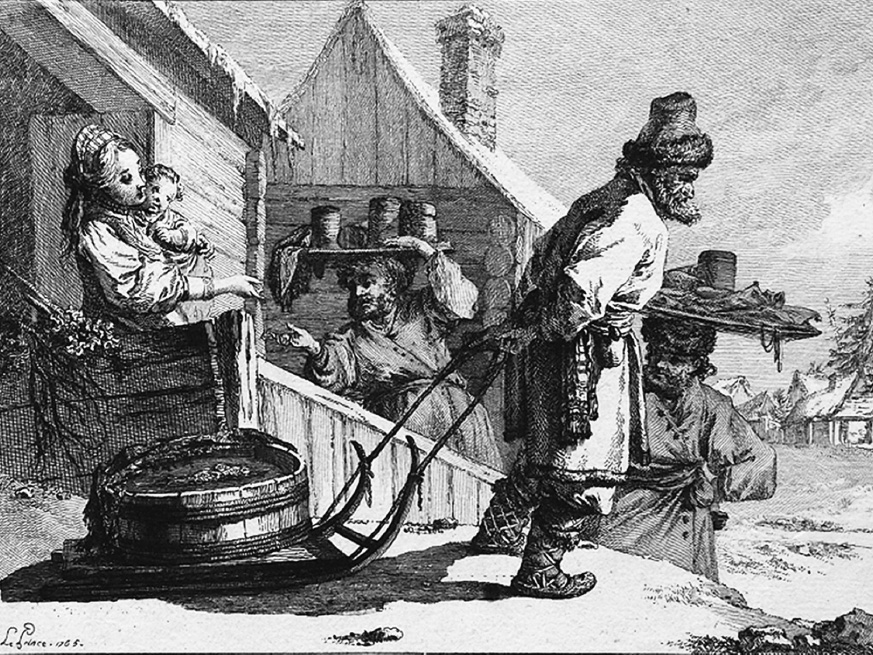The Tsar and His People
Developments in Russia took a chaotic turn with the reign of Ivan IV (r. 1533–1584), the famous “Ivan the Terrible,” who rose to the throne at age three. At age sixteen Ivan pushed aside his advisers and in an awe-inspiring ceremony, with gold coins pouring down on his head, he majestically crowned himself tsar.
Ivan’s reign was successful in defeating the remnants of Mongol power, adding vast new territories to the realm, and laying the foundations for the huge, multiethnic Russian empire. After the sudden death of his wife, however, Ivan began a campaign of persecution against those he suspected of opposing him. He executed members of leading boyar families, along with their families, friends, servants, and peasants. To replace them, Ivan created a new service nobility, whose loyalty was guaranteed by their dependence on the state for land and titles.

As landlords demanded more from the serfs who survived the persecutions, growing numbers of peasants fled toward wild, recently conquered territories to the east and south. There they joined free groups and warrior bands known as Cossacks. Ivan responded by tying peasants ever more firmly to the land and to noble landholders. Simultaneously, he ordered that urban dwellers be bound to their towns and jobs so that he could tax them more heavily. The urban classes had no security in their property, and even the wealthiest merchants were dependent agents of the tsar. These restrictions checked the growth of the Russian middle classes and stood in sharp contrast to economic and social developments in western Europe.
After the death of Ivan and his successor, Russia entered a chaotic period known as the “Time of Troubles” (1598–1613). While Ivan’s relatives struggled for power, ordinary people suffered drought, crop failure, and plague. The Cossacks and peasants rebelled against nobles and officials, demanding fairer treatment. This social explosion from below brought the nobles, big and small, together. They crushed the Cossack rebellion and brought Ivan’s sixteen-year-old grandnephew, Michael Romanov, to the throne (r. 1613–1645). (See “Primary Source 15.3: A German Account of Russian Life.”)
Although the new tsar successfully reconsolidated central authority, he and his successors did not improve the lot of the common people. In 1649 a law extended serfdom to all peasants in the realm, giving lords unrestricted rights over their serfs and establishing penalties for harboring runaways. Social and religious uprisings among the poor and oppressed continued through the seventeenth century. One of the largest rebellions was led by the Cossack Stenka Razin, who in 1670 attracted a great army of urban poor and peasants. He and his followers killed landlords and government officials and proclaimed freedom from oppression, but their rebellion was defeated in 1671.
Despite the turbulence of the period, the Romanov tsars, like their Western counterparts, made several important achievements during the second half of the seventeenth century. After a long war, Russia gained land in Ukraine from Poland in 1667 and completed the conquest of Siberia by the end of the century. Territorial expansion was accompanied by growth of the bureaucracy and the army. The tsars employed foreign experts to reform the Russian army, and enlisted Cossack warriors to fight Siberian campaigns. The great profits from Siberia’s natural resources, especially furs, funded the Romanovs’ bid for Great Power status. Russian imperialist expansion to the east paralleled the Western powers’ exploration and conquest of the Atlantic world in the same period.
